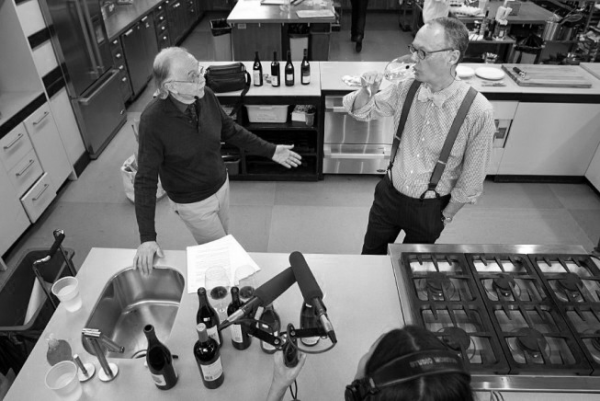
Sauvignon blanc is one of the most popular wine grape varieties in the world. French in origin but widely planted elsewhere, wines made from this varietal display a distinctive profile. It’s readily recognizable sensory profile make it a favorite among younger and novice wine drinkers and it makes a handy exemplar when talking about the sources of flavor and aroma in wine.
I think of this varietal as the wine-equivalent of a first reader—a book with a simple story composed with a limited vocabulary and printed in big block letters. Its characteristic smells and tastes are flagrant, dramatic, and familiar. For all these reasons, I think of wines made from sauvignon blanc as unusually “legible.”
In a recent America’s Test Kitchen Radio segment we started by having host Christopher Kimball taste and comment on four wines in order to illustrate the kinds of aromas and flavors the grape typically presents. These can be organized into (i) primarily herbal and grassy, (ii) primarily piney and resinous, and (iii) primarily citrusy (lemon-grapefruit-gooseberry). We could have added a fourth: the pungent scent known to experienced tasters by the inglorious but wonderfully accurate descriptor cat pee.
After Chris tasted through the samples, we took a step back to consider the larger phenomenon of flavors and scents in wine and where they come from.
We hear all sorts of explanations for how it is that we encounter, for example, scents of saddle leather or tar in red wine or, as we’ve seen, notes of tree resin, grapefruit rind, or basil leaf in aromatic whites. I remember one winemaker claiming that one of his wines had a whiff of lavender because there was a field full of the aromatic shrub next to the vineyard.
Another theory suggests that flavors in wine somehow come out of the ground. This is a particularly popular explanation when the smell or taste in question is something that reminds us of mineral things like rocks, stones, dirt, or soils.
But the truth is that when you find something in wine that has the scent of a freshly mown hayfield, a ripe blackberry, or a struck match, it’s not because the grapes or the wine has had some physical connection to any of these things but because there are present in the wine the same chemical compounds that make hay and raspberries and struck sulfur matches smell as they do.
I think of this varietal as the wine equivalent of a first reader—a book with a simple story composed with a limited vocabulary and printed in big block letters.
One can’t completely dismiss environmental influence (smoke from a nearby fire has been known to cling to grapes and later to appear in the wine made from them), but in general the flavors and aromas in wine are there as a result of (i) the biology of the vine plant itself, (ii) the activity of yeasts and bacteria, (iii) chemical processes occurring during crushing and fermentation, and iv) maturation (the contribution made by new oak barrels, for example). Several or all may be in play at one time.
Minerals represent something like a special case. Plant and soil scientists assure us that there really is no way for minerals in the soil to contribute directly to the taste or smell of wine. In part because minerals have neither taste nor smell; in part because minerals, as such, aren’t taken up by plant metabolism. Sodium chloride (common salt) is apparently the sole exception to this.
So why does Sauvignon Blanc taste the way it does?
Its characteristic smells and flavors have existed for ages, of course, but it’s only in the past 20 years or so that we’ve been able to link these features with a specific set of chemical compounds known as volatile thiols.
There are quite a few of them, and they have long, complicated names, which there is no good reason to memorize, but it’s precisely these chemicals that produce the spectrum of scents—including citrus zest, passion fruit, and tomato leaf—that we rightly associate with wines issuing from this richly aromatic grape.
-Stephen Meuse
Reach me at stephenmeuse@icloud.com